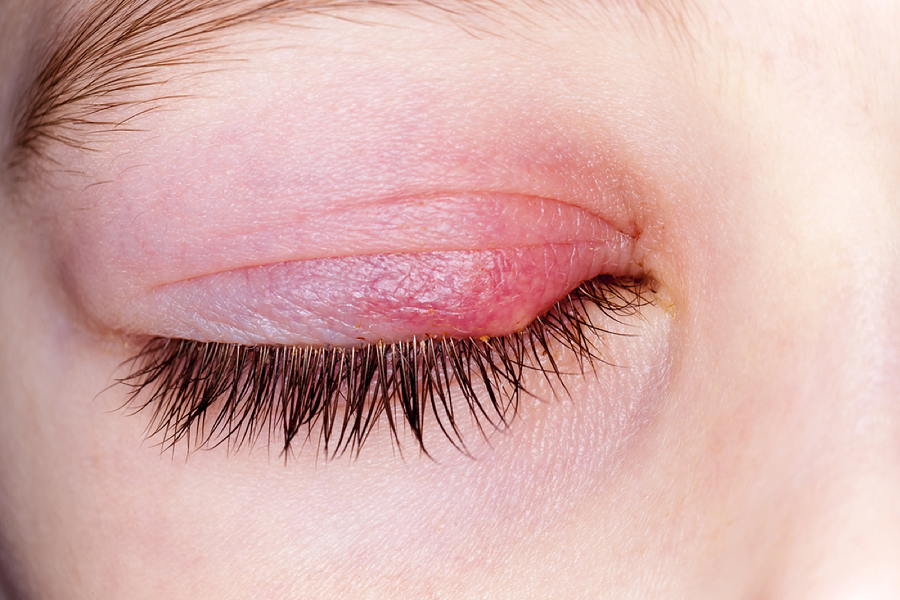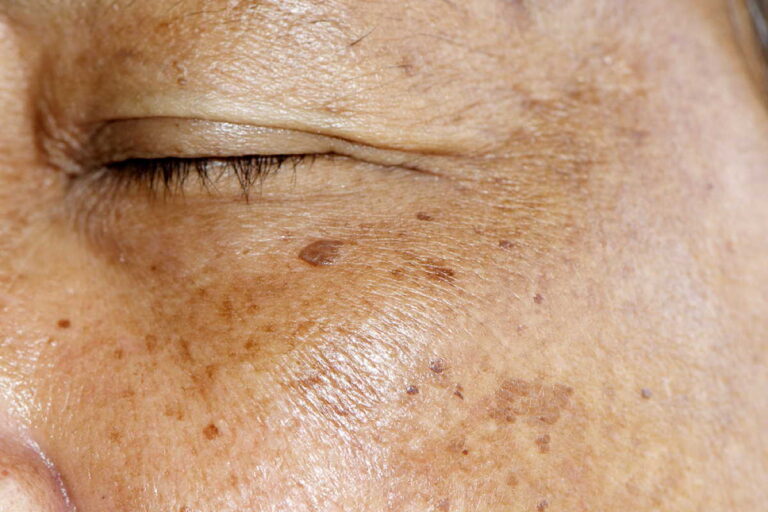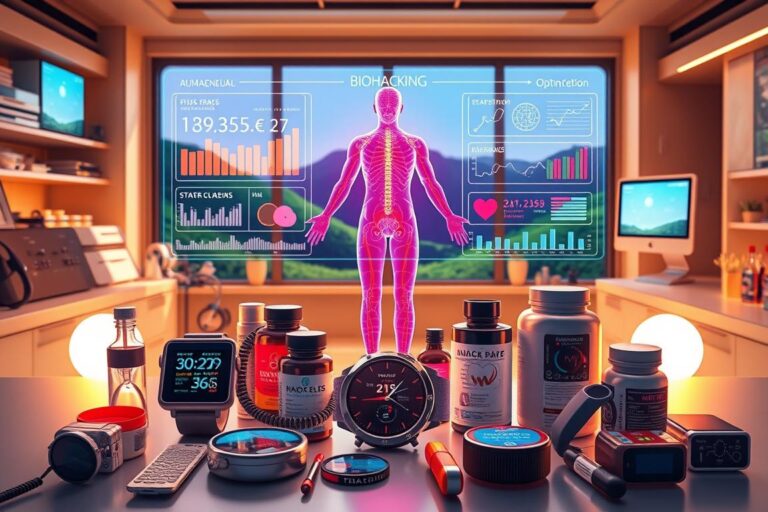Styes on the eye: symptoms, causes and treatment
Did you know that almost everyone develops a stye on their eye at least once in their life? This small, painful swelling can not only be annoying, but can also be caused by a bacterial infection – usually staphylococci. Although self-healing is often possible, some cases require specific treatment. In this article you will learn everything you need to know about the symptoms of sty, the most common causes and effective methods of treatment and prevention.
What is a sty?
A sty is an acute inflammation of the eyelid glands. It occurs when bacteria invade the glands and cause an infection. Styes are usually painful and can cause redness and swelling.
Differences between internal and external sty
There are two main types of styes: the internal and the external stye. An internal stye, also known as hordeolum internum, affects the meibomian glands located in the inner eyelid. This form of inflammation often leads to more severe symptoms as it is located deep in the eyelid.
An external stye (hordeolum externum), on the other hand, affects the Zeis or minor glands, which are located on the outside of the eyelid. This form is more easily accessible and in most cases visible as a red, swollen area on the edge of the eyelid.
Barleycorn vs. hailstone
A chalazion differs significantly from a sty. While a sty is caused by a bacterial infection and can be extremely painful, a chalazion is a non-infectious blockage of the meibomian glands. This blockage leads to a painless hardening of the eyelid, which is often less dramatic than a sty.
The main styes symptoms are swelling, redness and pain in the eyelid area. In contrast, a chalazion usually remains painless and is characterized by a slow-growing, firm lump.
Typical symptoms of a sty
A stye on the eye can be recognized by a variety of symptoms. The most common symptom is a sudden, painful swelling of the eyelid, accompanied by clearly visible redness. In addition, pus blisters may appear, which characterize the infection.
Swelling and redness
Swelling and redness are the first and most visible signs of a stye. This swelling can affect the entire eyelid and often leads to an unpleasant feeling of pressure.
Pain and pus formation
Pain is another typical symptom. The affected area can be very sensitive to the touch. The sty pus forms after a few days, which can increase the pressure and pain.
Other side effects
In addition to the main symptoms, there is often itching, a foreign body sensation and increased tearing. A sty can also cause the eyelid to tighten and the eye to water, resulting in temporary visual impairment.
Causes of a sty
The main causes of styes are bacterial infections, usually caused by staphylococci, which colonize the sebaceous glands of the eyelid. These stye bacteria can multiply due to certain factors, which leads to an increased risk.
A common reason that can contribute to the development of a sty is a lack of hygiene. This includes, for example, wearing contact lenses without proper cleaning or using expired or contaminated eye make-up. A weakened immune system and chronic inflammation of the eyelid margins also pose an increased risk.
External influences, such as rubbing the eyes vigorously with unwashed hands, can also contribute to the spread of bacteria. It is therefore important to pay attention to daily eye care and hygiene in order to minimize the risk of styes.
Sty eye: Is it contagious?
Styes, also known as hordeolum, are infections of the eyelids caused by bacteria. This raises the legitimate question: Is it a contagious stye? The short answer is yes. Because the condition is bacterial in origin, it can be easily spread through direct contact or shared objects such as towels.
Transmission and precautions
Transmission of a sty often occurs through touching infected areas and subsequent contact with the eyes. A few simple precautions should be taken to reduce the risk of transmission:
- Wash your hands regularly and thoroughly
- Avoid sharing personal items such as towels
- Avoid direct eye contact with infected persons
Risk factors
Certain groups of people are at a higher risk of developing a contagious stye. These include people who come into frequent contact with irritants, such as dust and dirt, or people who suffer from chronic eye diseases. A weakened immune system or poor hygiene practices can also increase the risk.
By observing simple hygiene measures, transmission can be avoided in many cases, significantly reducing the risk of infections and complications.
Diagnosis: How doctors diagnose a sty
Styes are usually diagnosed by a simple clinical examination of the affected eye area. Information about the duration of the symptoms and any previous infections of the patient play an important role. In rare cases, additional imaging procedures or laboratory tests may be necessary to rule out other diseases.
Typical diagnostic procedures
One of the main components of the stye examination is the inspection of the eyelid with a slit lamp. This special microscope enables the doctor to take a detailed look at the sty and the surrounding tissue. A precise diagnosis of sty can be made without having to take invasive measures.
Questions and examinations when visiting the doctor
When diagnosing a sty, the doctor will typically ask questions about the patient’s medical history and symptoms. It is important to describe the duration of the symptoms and possible complications. In some cases, a stye examination may also include an examination of the surrounding areas to ensure that no other eye infections or diseases are present.
Course of a sty
The typical course of styes begins with a small, sensitive spot on the eyelid. Within a few days, this develops into a painful swelling. The stye usually resolves spontaneously and the symptoms improve within one to two weeks.
In complicated cases, however, the healing of the sty canbe delayed. Medical intervention is then sometimes necessary. It is important to keep the affected eye clean and not to squeeze it in order to avoid further infection.
Medical treatment options
A sty can be unpleasant and painful, which is why targeted medical treatment is often necessary. Various treatment options are available to combat the infection and promote rapid healing.
Ointments and eye drops
A common method of stye treatment involves the application of stye ointment or eye drops. These products contain antiseptic or antibiotic agents that help to fight the bacteria in the affected area. They are usually applied several times a day to achieve an optimal effect.
Antibiotics and surgical procedures
In more severe cases, it may be necessary to use oral antibiotics for sty treatment, especially if the infection spreads to surrounding tissue or does not improve with local measures. Sometimes a minor surgical procedure is also required, in which the doctor opens the sty through a small incision to drain the pus. This procedure is often performed under local anesthesia and provides rapid relief of symptoms.
Red light therapy can also have a supportive effect, as it promotes blood circulation and accelerates the healing process.
Home remedies for sty
Many people prefer to use home remedies for a sty as they are often easy to use and inexpensive. Some of these methods have been proven in practice and can help to support healing and relieve pain.
Red light and warm compresses
A proven home remedy for sty is the application of red light. This treatment promotes blood circulation and can speed up healing. Simply shine a red light lamp on the affected eye for a few minutes at a distance of 20 to 30 cm.
Warm compresses are also helpful. These can be applied several times a day with a clean cloth and warm water. This relieves the pain and supports the maturation of the sty.
Hygiene measures
Thorough hygiene measures are important to prevent and treat a sty. This includes the following steps:
- Regularly cleanse the eye area with a mild cleanser.
- Avoid touching your eyes with unwashed hands.
- Use separate towels and washcloths to prevent the spread of infection.
- Avoid sharing cosmetic products, especially eye make-up.
A gentle sty massage directly on the eyelid can also help to support the flow of pus and relieve the pain. However, it is important to ensure that your hands are absolutely clean so as not to introduce any additional bacteria.
When should you see a doctor?
A visit to the doctor is strongly recommended if severe pain occurs or vision deteriorates noticeably. Medical help should also be sought if there is no improvement after a week or if the symptoms worsen.
In cases where the stye recurs, a more intensive medical consultation may be required. The medical consultation sty helps to identify the causes behind the chronic recurrence and find an effective treatment.
Medical advice is also important to rule out possible complications such as an abscess or visual impairment. It is always better to be on the safe side and consult a specialist to avoid long-term damage and initiate targeted treatment.
Do not hesitate to make an appointment with your doctor if you are unsure or notice any of the above signs. Early intervention can often help to shorten the healing time and better control the symptoms.
How can a sty be prevented?
Effective sty prevention requires good sty hygiene. By observing certain measures, you can significantly reduce the risk of developing a sty.
Hygiene tips
Proper stye hygiene starts with regular hand washing. Our hands are exposed to many germs every day, which can easily get into our eyes. It is also important to remove make-up thoroughly before going to bed to avoid blockages in the sebaceous glands. Changing contact lenses regularly and keeping them clean is also crucial to prevent infections.
General precautions
People with chronic eyelid inflammation should see an ophthalmologist regularly. Avoiding rubbing the eyes can prevent further inflammation and is a simple step to prevent styes. Sharing towels or cosmetics with others should also be avoided as this promotes the transmission of bacteria.
Long-term complications and risks
Untreated styes can lead to considerable complications. These include infections that spread to surrounding tissue and form abscesses. It becomes particularly dangerous if the infection reaches deeper structures of the eye or if permanent inflammation impairs the functionality of the eyelids.
Recurrent styes can lead to permanent eyelid changes that may impair vision. It is therefore essential to consult a doctor in the event of persistent or recurring swelling in order to prevent serious sty complications.
Summarized tips and recommendations
At the first signs of a sty, it is advisable to carefully warm the affected area. Suitable measures include warm compresses or a gentle red light. However, you should make sure that you keep the eye clean and follow basic hygiene rules. This reduces the likelihood of the infection spreading further.
It is recommended to use antiseptic ointments or eye drops, especially in the initial stages. These products can help to stop the progression of the stye and thus support healing. However, it is important to discuss their use with a doctor or pharmacist to avoid possible side effects and to adapt their use to your own needs.
Another key tip for dealing with a sty is not to open or squeeze it out yourself. This could allow the pathogens to penetrate further into the tissue and make the infection worse. If the symptoms persist or worsen despite all measures, an early visit to the doctor is essential. In this way, more serious complications can be avoided and targeted treatment can be initiated.






